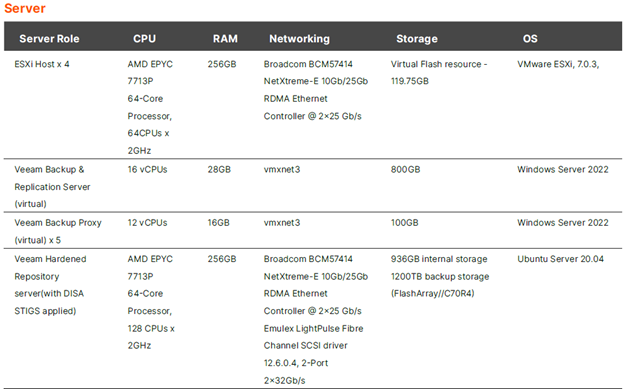As the global solutions architect for Veeam's Pure Storage alliance, I have been asked this question many times. I am pleased to report that we now have performance results, and they are exceptional.
But first, a bit on the test environment:


As you can see the Veeam Backup & Replication Backup Proxies were configured as Virtual Machines (VMs). This was done to reduce the hardware requirements in the lab testing environment. This also means that the backup traffic to these virtual Backup Proxies is over in-guest iSCSI, which adds overhead to the CPU and memory workload on those proxies. It is expected that if the Backup Proxies were on physical machines that are physically connected to the storage network, the performance would have been even better.
Performance
Even with virtual Backup Proxies connected via in-guest iSCSI, performance was impressive:
- Active Full backup performance of 4GB/s (14.4TB/hr)
- Full restore performance of 4.7GB/s (16.9TB/hr)
And this was with a single FlashArray//C backup target.
For more information, and to see what best practices were used, check out the Veeam and Pure Storage Reference architecture for Veeam Backup & Replication with Pure Storage FlashArray//C
For even more information, this reference architecture aligns with the Veeam Security Blueprint for Pure FlashArray//C with 1000 VMs and 100 physical servers.






